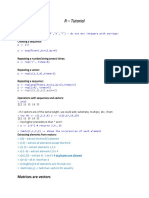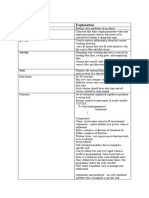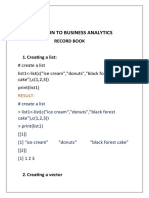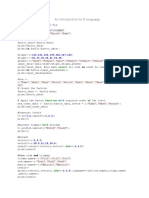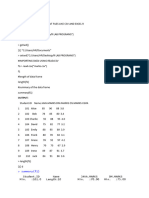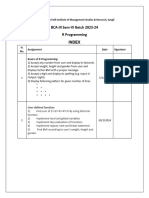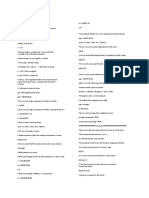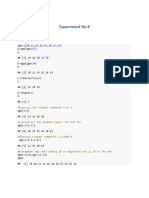0% found this document useful (0 votes)
19 views12 pagesLab 02 - Compound Data Structures
The document provides a comprehensive overview of compound data structures in R, including vectors, matrices, lists, factors, and data frames. It covers creation, indexing, slicing, and operations on these structures, along with functions for data manipulation and analysis. Additionally, it discusses importing external datasets and performing data simulation.
Uploaded by
testingcode44Copyright
© © All Rights Reserved
We take content rights seriously. If you suspect this is your content, claim it here.
Available Formats
Download as PDF, TXT or read online on Scribd
0% found this document useful (0 votes)
19 views12 pagesLab 02 - Compound Data Structures
The document provides a comprehensive overview of compound data structures in R, including vectors, matrices, lists, factors, and data frames. It covers creation, indexing, slicing, and operations on these structures, along with functions for data manipulation and analysis. Additionally, it discusses importing external datasets and performing data simulation.
Uploaded by
testingcode44Copyright
© © All Rights Reserved
We take content rights seriously. If you suspect this is your content, claim it here.
Available Formats
Download as PDF, TXT or read online on Scribd
/ 12


